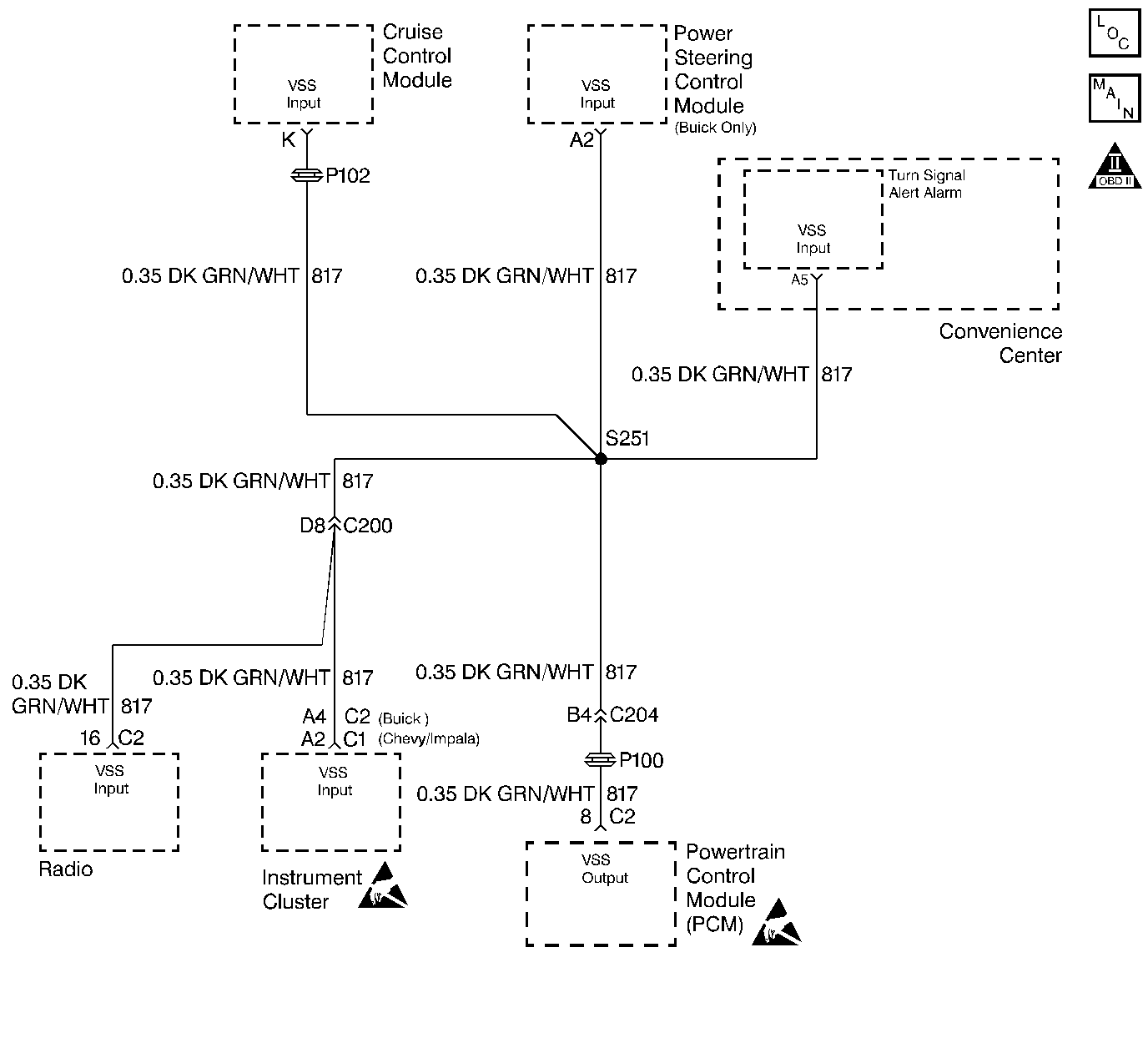
Circuit Description
Voltage is applied to the Vehicle Speed Output circuit by the various components which use vehicle speed data. The PCM creates the Vehicle Speed Output signal by rapidly grounding this circuit via an internal switch called a driver. The driver operates at the same rate as the VSS signal input. The various components recognize the voltage being pulled to ground as an indication of vehicle speed.
The primary function of the driver is to supply the ground for the component being controlled. Each driver has a fault line which is monitored by the PCM. When the PCM is commanding a component ON, the voltage of the control circuit should be low (near 0 volts). When the PCM is commanding the control circuit to a component OFF, the voltage potential of the circuit should be high (near battery voltage). If the fault detection circuit senses a voltage other than what is expected, the fault line status will change causing the DTC to set.
Conditions for Setting the DTC
| • | Engine speed greater than 600 RPM. |
| • | The PCM detects that the commanded state of the driver and the actual state of the control circuit do not match. |
| • | Condition must be present for a minimum of 25.5 seconds. |
Action Taken When the DTC Sets
| • | The DTC will be stored in the PCM memory when the diagnostic runs and fails. |
| • | The Malfunction Indicator Lamp (MIL) will not illuminate. |
| • | The PCM will record operating conditions at the time the diagnostic fails. This information will be stored in Failure Records. |
Conditions for Clearing the MIL/DTC
| • | A history DTC will clear after 40 consecutive warm-up cycles, if no failures are reported by this or any other non-emission related diagnostic. |
| • | A last test failed (Current DTC) will clear when the diagnostic runs and does not fail. |
| • | PCM battery voltage is interrupted. |
| • | Using a scan tool. |
Diagnostic Aids
Using Freeze Frame and/or Failure Records data may aid in locating an intermittent condition. If the DTC cannot be duplicated, the information included in the Freeze Frame and/or Failure Records data can be useful in determining how many miles since the DTC set. The Fail Counter and Pass Counter can also be used to determine how many ignition cycles the diagnostic reported a pass and/or a fail. Operate vehicle within the same freeze frame conditions (RPM, load, vehicle speed, temperature etc.) that were noted. This will isolate when the DTC failed. For intermittents, refer to Symptoms .
Test Description
Number(s) below refer to step numbers on the diagnostic table.
Step | Action | Value(s) | Yes | No |
|---|---|---|---|---|
1 | Was the Powertrain On-Board Diagnostic (OBD) System Check performed? | -- | ||
2 |
Important:: Do Not perform this test without supporting the lower control arms so that the drive axles are in a normal horizontal position. Running the vehicle with the wheels hanging down at full travel may damage the drive axles.
Does the vehicles speedometer indicate vehicle speed? | -- | Go to Diagnostic Aids | |
3 |
Does the vehicles speedometer indicate vehicle speed? | -- | Further diagnosis of circuit required. Go toSection 8A-33 | |
4 | Check for faulty connections at the PCM. Was a problem found and corrected? | -- | ||
5 |
Important: The replacement PCM must be programmed. Refer to Powertrain Control Module Replacement/Programming . Replace the PCM. Is the action complete? | -- | -- | |
6 |
Does the scan tool indicate that this test ran and passed? | -- | ||
7 | Using the scan tool, select Capture Info, Review Info. Are any DTCs displayed that have not been diagnosed? | -- | Go to the applicable DTC table | System OK |
